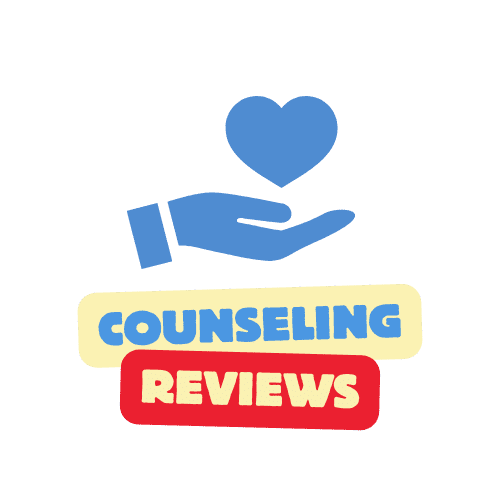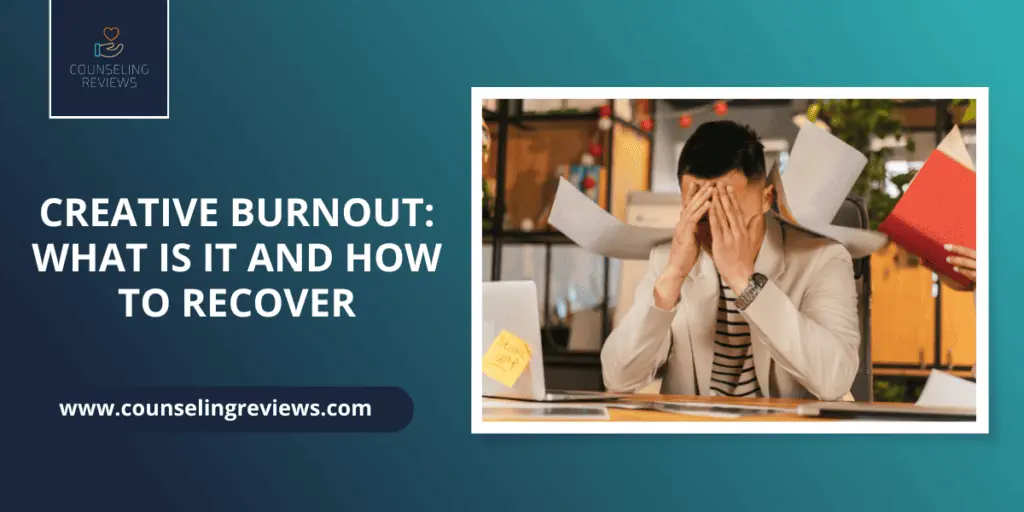Creative burnout manifests as physical, mental, and emotional exhaustion, usually due to working too much or committing to multiple creative pursuits. It is sometimes difficult to recognize, but those who suffer from it experience decreased motivation, inability to concentrate, and feelings of emptiness.
Taking regular breaks, speaking to friends and family about it, and practicing self-care can alleviate the symptoms. Most importantly, it is essential to understand how creative burnout arises and what you can do to mitigate its effects.
Let us first look at what it means to be creative and then understand creative burnout at a deeper level. Finally, we offer tips to bounce back from creative burnout and remain motivated for prolonged periods.
What it means to be a healthy creative
Creative professionals depend on being able to fantasize and imagine, and using divergent thinking to accomplish goals. Fields such as advertising, copywriting, music, design, and many others depend on your ability to imagine and translate that imagination into work.

Consequently, an essential part of creativity is imagining and spending time in fantasies that translate to work. Emotional states drive a lot of creativity, and stress and anxiety can curtail the depth of feelings you may usually feel. However, a healthy creative person ensures that imagining does not feel like work.
However, creatives can experience burnout just like people in other occupational fields. Being stressed out or overworked can stop you from imagining and tire you emotionally and physically. When you are no longer able to imagine, you are going to experience difficulties at work.
Hence, it is vital that you:
- Maintain boundaries between your imagination and creative work.
- Make ample time to socialize with your friends and family
- Get enough exercise and sleep well
- Take care of your diet.
- Ensure that your emotional needs are taken care of.
Now, let’s dig deeper and understand creative burnout comprehensively.
What is creative burnout?
You may have recently noticed that you have become cynical and critical while feeling like work is a drag. You may also have seen a drop in your energy levels and may have been finding it difficult to concentrate or derive satisfaction from your achievements. These are all typical symptoms of burnout, which can affect your physical and mental health.
Clinical or creative burnout is not currently part of the Diagnostic and Statistical Manual of Mental Disorders (DSM 5). However, the World Health Organization’s (WHO) International Classification of Diseases (ICD 11) includes “burnout” as an occupational phenomenon. The ICD 11 describes burnout as a syndrome resulting from chronic workplace stress that hasn’t been managed successfully.
Quite clearly, burnout is recognized within an occupational context. It acknowledges three critical dimensions: a sensation of losing energy or being exhausted, alienation or cynicism related to one’s job, and reduced professional efficiency. However, some European countries recognize job burnout as a medical disorder and classify it under exhaustion disorder or as a subtype of adjustment disorder.
Regardless of how we classify it, job burnout can severely impact your performance and well-being. Creative burnout is a similar concept used in popular psychology to describe a similar phenomenon that affects creative professionals.
What causes creative burnout?
If we were to distill the most important causes of creative burnout, here they are:
1. Perfectionism
While any profession related to the arts requires a degree of perfection, it can paradoxically affect creativity. The more you try to be perfect, the less you can imagine and be creative. If you try too hard to be excellent at what you do, you may end up experiencing a creative block. Think of it as a form of analysis paralysis.
2. Not Having Boundaries or Restrictions
Working in creative fields can be demanding, and your managers or clients can be pushy. If you do not draw healthy boundaries and allow yourself to be pushed around, it will impact your creativity negatively. You may begin to resent your work and end up doing a poor job at whatever you need to do.
3. Self-Doubt
Creative fields are highly competitive, and it is easy to fall victim to self-doubt and cynicism. Prolonged periods of self-doubt can result in resentment and repulsion towards your work. This eventually leads to creative burnout.
4. Stress
Stress has a negative effect on divergent thinking and imagination. If you cannot deal with stressful situations at work, you will be unable to deliver creative assignments. When this turns into a pattern, you can quickly become a victim of creating burnout.
5. Decision Fatigue
Every creative assignment requires decision-making at different levels. Some of these decisions may either make or break your career. When you have to make these decisions on an ongoing basis, it overwhelms your cognitions. This can lead to creative burnout as well.

Symptoms of creative burnout
Here are some common symptoms you may experience if you’re suffering from creative burnout:
- Procrastinating and delaying the completion of creative tasks
- Not being able to complete even mundane assignments
- Feeling physically and mentally tired
- Feeling cynical and resentful towards your work and colleagues
- Not being able to sleep well or feel rested after waking up
- Unhealthy coping mechanisms include alcohol abuse, endless scrolling, overeating junk food, etc.
- Being irritable and snarky both at work and elsewhere
- Feeling overwhelmed in general and being filled with self-doubt
- Not being able to imagine or channel your emotions into creative work
How to bounce back from creative burnout
Creative burnout usually does not appear all of a sudden. It’s the culmination of different factors, some of which could be avoided right at the outset.
Here are some ways to prevent creative burnout before it occurs. The same tips can help you bounce back from creative burnout once it sets in.
- Take a break
Ensure you get plenty of me time and take frequent breaks at work. We cannot stress enough how important taking breaks is. Do not work on that day if you think you’re not feeling creative. Instead, do something else that could be more creative or finish up some pending tasks that are not creatively taxing.
- Don’t try to do it all.
If you’re good at what you do, taking up all the responsibilities yourself becomes quite acceptable. However, this impacts your creativity negatively. You may start to believe that others cannot do the things that you do. Delegate some of the tasks, and be ready to communicate clearly regarding your capacity to complete work.
- Plan ahead
It makes sense to plan your creative tasks well in advance. Create a storyboard that helps you have a roadmap toward completing every creative project you’ve been assigned.
- Ask for help – or learn to say no.
Creative professions can be incredibly lonely and isolating. If you work from home, it gets even worse. Ask for help or delegate your work to someone you trust if you are not feeling creative. If you can’t complete more assignments, learn to say no.
- Take control
Begin to take control of your creativity. Creative tasks require individual efforts. If your clients or bosses constantly criticize you or give you unwanted feedback, let them know it affects your creative process.
- Dealing with burnout
When experiencing burnout (read the symptoms listed above), seek therapy or guidance. Professional help, whether online or offline, can go a long way in helping you deal with stressful situations, including burnout. In addition, practicing mindfulness or engaging in a relaxing activity regularly can help you deal with burnout.
- Be honest with yourself.
Do not be in denial or blame it all on the increasing workload. Instead, acknowledge that you may be experiencing creative burnout and need a break. Most of the time, we ignore emotional distress because we are conditioned not to validate distressing emotions. These emotions are a signal that something is probably wrong in your life:
- Taking up too much work.
- Trying to be creative all the time.
- Having people micromanage your creativity.
- Don’t try to work through it.
Working through creative burnout has the effect of reducing the quality of your work. This not only affects your reputation but also your self-esteem. Hence, seek help for your burnout, and speak to your clients or bosses regarding your difficulties.
- Treat yourself with kindness.
People often judge themselves very harshly when they experience burnout. Creative people tend to be more cynical when they cannot deliver assignments like they used to. Treat yourself with kindness without being cynical or disgruntled with your situation.
- Give yourself some time.
A short vacation or a mental health day can give you the respite you need. Do not try to work when experiencing burnout, as that will only backfire in terms of poor performance. If you are not able to take off from work, take frequent breaks at work. Working for 25 minutes and taking a five-minute break is an excellent strategy to reduce stress.
- Enjoy the creativity of others.
If you must go to work every day, speak to your managers about your burnout. Ask them permission to observe others’ work or assist them nominally. This helps you escape your mind and develop a nurturing and empathetic attitude toward others.
- Learn from it
Recovering from burnout takes time but is not impossible. However, use the episode as an opportunity to learn your strengths and weaknesses and what triggers burnout. This helps you to avoid future episodes of creative burnout.
How to Stay Inspired and Motivated
Once you recover from burnout, it is important to be mindful of your emotional and creative health to avoid similar situations from recurring.
Here are a few tips to stay inspired and motivated:
- Tap Into Your Source
Each creative professional has a different source for generating ideas; the key is to tap into it. Find out what motivates you and drives your creativity. It could be your creative muse or spending a little time with your pet cat.
- Perfect Your Craft
Often, we tend to become complacent and ignore our potential. This results in disenchantment and jadedness that can further contribute toward creative burnout. Add skills to your repertoire, or perfect your art by attending workshops and practicing your craft.
- Get Better at Time Management
Time management is the key to avoiding burnout. When tasks keep piling up, you will naturally lean toward procrastinating. This devolves further into creative burnout. Make sure you divide your tasks into chunks and practice time management.
- Take (Actual) Breaks
You can quickly recover from burnout and prevent future occurrences by taking actual breaks. This means going on a short vacation or doing things you enjoy. If holidays are not possible, try to take breaks at work frequently. However, ensure this does not affect your performance, as frequent breaks can also paradoxically cause procrastination.
- Practice Mindfulness Meditation
Mindfulness meditation is a technique that helps you become self-aware of your situation and gain clarity and calmness. Observe your thoughts without judging and let them pass like passing clouds. Breathe in and out deeply as you engage in this exercise. Short meditative exercises can be performed during breaks at work too, and are known to enhance productivity.
FAQs
How does burnout make us less creative?
Burnout is a state of exhaustion that affects you physically, emotionally, and occupationally. It affects your imagination and creativity and hinders your performance. As burnout is closely related to stress, you may feel overwhelmed and exhausted when you must deliver something creative. Most importantly, you can only be creative when you feel inspired. During burnout, it is challenging to feel inspired.
What strategies can be used to resist creative burnout?
Some of the popular strategies to resist creative burnout include:
Taking frequent breaks.
Seeking therapy for underlying emotional issues.
Saying “no” when too much is served on your plate.
Most importantly, practicing self-care and living a healthy life supporting your body and mind is essential. This means you must get adequate sleep and nourishment, physical activity, and remain hydrated. Once you’ve covered the essentials, you can work with your clients and superiors to help you delegate complex tasks or buy time until you recover from an episode of burnout.





